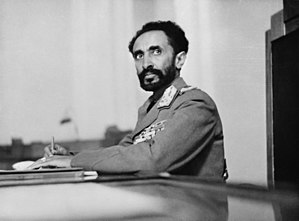 Image via Wikipedia
Image via Wikipedia
According to Brugha and Varvasovszky (2000), actors or stakeholders have been garnering increasing role in influencing organizational decision-making and policy formulations in the last few years. The general objectives of AU member-states is to promote the political and socio-economic cooperation of the continent, protect issues of interest to member states, safeguard peace and security among member-states, and enhance democratic governance and human rights (Hanson, 2009). The current chairman of the AU is Teodoro Obiang Nguema Mbasogo of Equatorial Guinea who took over in January 2011 and has led his country since 1979 after ousting his uncle Francisco Macías Nguema in a bloody coup. The use of effective communication is the driving factor that brings together member-states with varying political and social ideals. According to Dewhurst and Fitzpatrick (2005), getting buy-in from senior level management and having the confidence and endorsement of the right people among internal circles can help alleviate future inconsistencies among stakeholders.
Organizations have a better chance of succeeding in their business pursuits when they give credence to stakeholder participation in a win-win style. Gousseau (2008) is of the opinion that stakeholders are those people in institutions and organizations that are visible in school boards, municipalities, and district hospitals. Stakeholders are an integral part of organizational businesses and therefore deserve to be treated with care to ensure strategic planning processes go according to plan. Stakeholders play a great role in the running and rejuvenation of business transactions. However, stakeholder identification and prioritization should be the prerogative of top level management in businesses (Parent and Deephouse, 2007).
Two important strategies that could be used to enhance better buy-in within the AU are a structured approach and mapping out advocacy. Since the AU is an organization that exists to be of service to a massive continent with over 50 member-states, laying the foundations for advocacy groups that will relay vital communiqués and other organizational decrees will help streamline the mapping of intended actions and procedures. Mapping out advocacy entails ensuring identified stakeholders that are at ease and in good terms with proposed strategy or activity. Having a structured approach will help affect a strategy that is conducive to the environment and major stakeholders.
References
Hanson, S. (2009). Backgrounder: The African Union. Retrieved from http://www.cfr.org/africa/african-union/p11616
Gousseau, K. (2008, July 22). Seniors key concern in strategic planning: Stakeholder meeting in city Thursday. Alaska Highway News, A.1.
Parent, M. M., & Deephouse, D. L. (2007). A case study of stakeholder identification and prioritization by managers. Journal of Business Ethics, 75(1), 1–23.
Dewhurst, S., & Fitzpatrick, L. (2005). Turning stakeholders into advocates. Strategic Communication Management, 9(6), 6–7.
Brugha, R., & Varvasovszky, Z. (2000). Stakeholder analysis: A review. Health Policy and Planning, 15(3): 239–246.


No comments:
Post a Comment